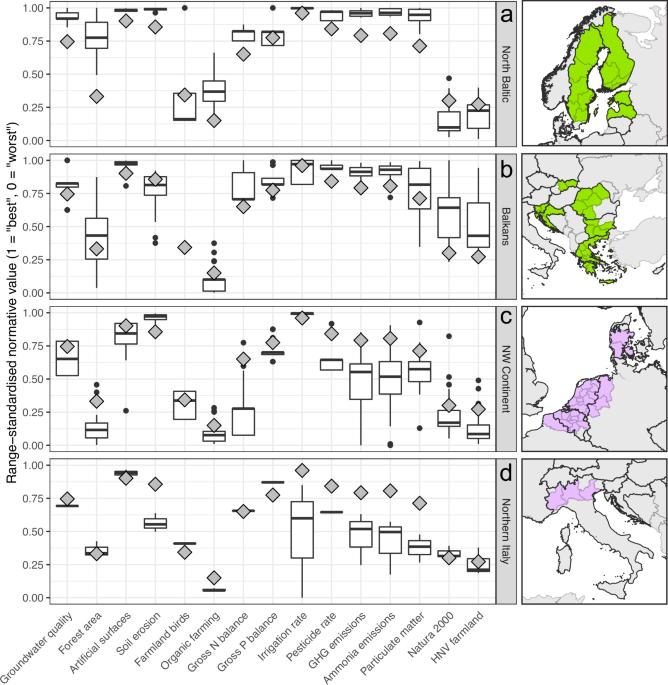Rural land systems both support and hinder the Sustainable Development Goals across Europe
IF 8.9
1区 地球科学
Q1 ENVIRONMENTAL SCIENCES
引用次数: 0
Abstract
Achieving sustainable rural land systems, including farms and forestry, is essential to achieve the European Union’s goal of fair and healthy food systems while becoming climate-neutral and halting biodiversity loss. Here we quantitatively assess the environmental and socioeconomic sustainability of rural land systems in Europe using spatial hotspot analyses based on 15 environmental and 9 social sustainability indicators from the European Sustainable Development Goals and the Common Agricultural Policy. We find high subsidy support for under-performing sustainability areas and low sustainability performance in areas producing the most calories. However, we identified two brightspots with good environmental and socioeconomic performance (Nordics and Central Europe), and five dragspots hindering sustainability: the Balkans, the Lowlands, Northern Italy, Southern Italy and Malta, and Southern Spain. Redirecting support to reward social and environmental benefits from land use can help achieve sustainability goals. European agricultural subsidies are mainly allocated to rural regions where agriculture is intensified such as southern Europe, the Lowlands, and the Balkans, instead of Nordic and Central Europe which are more sustainable, according to a spatial hotspot analysis of 24 sustainability indicators

整个欧洲的农村土地制度既支持又阻碍可持续发展目标的实现
实现包括农场和林业在内的农村土地系统的可持续发展,对于实现欧盟建立公平、健康的食品系统,同时实现气候中性和遏制生物多样性丧失的目标至关重要。在此,我们根据欧洲可持续发展目标和共同农业政策中的 15 项环境指标和 9 项社会可持续发展指标,利用空间热点分析对欧洲农村土地系统的环境和社会经济可持续性进行了定量评估。我们发现,可持续性表现不佳的地区补贴支持较高,而热量生产最多的地区可持续性表现较低。不过,我们发现了两个环境和社会经济表现良好的亮点地区(北欧和中欧),以及五个阻碍可持续发展的拖累地区:巴尔干地区、低地、意大利北部、意大利南部和马耳他,以及西班牙南部。调整支持方向,奖励土地利用带来的社会和环境效益,有助于实现可持续性目标。根据对 24 项可持续性指标的空间热点分析,欧洲农业补贴主要分配给了南欧、低地和巴尔干等农业集约化的农村地区,而不是可持续性更强的北欧和中欧地区。
本文章由计算机程序翻译,如有差异,请以英文原文为准。
求助全文
约1分钟内获得全文
求助全文
来源期刊

Communications Earth & Environment
Earth and Planetary Sciences-General Earth and Planetary Sciences
CiteScore
8.60
自引率
2.50%
发文量
269
审稿时长
26 weeks
期刊介绍:
Communications Earth & Environment is an open access journal from Nature Portfolio publishing high-quality research, reviews and commentary in all areas of the Earth, environmental and planetary sciences. Research papers published by the journal represent significant advances that bring new insight to a specialized area in Earth science, planetary science or environmental science.
Communications Earth & Environment has a 2-year impact factor of 7.9 (2022 Journal Citation Reports®). Articles published in the journal in 2022 were downloaded 1,412,858 times. Median time from submission to the first editorial decision is 8 days.
 求助内容:
求助内容: 应助结果提醒方式:
应助结果提醒方式:


